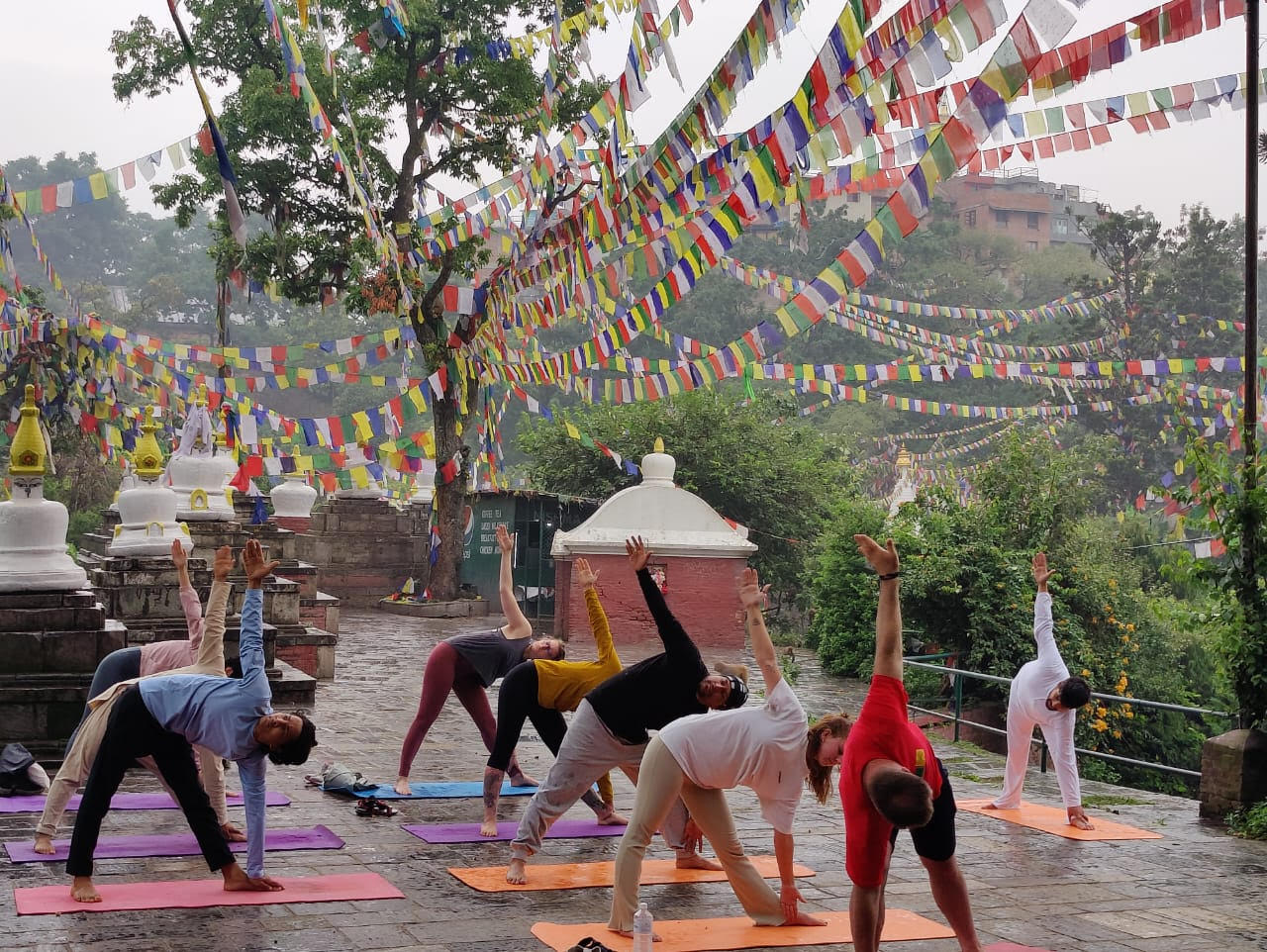
7 Jun 2022 HYN Himalayan Yoga Academy
Why does Monastery Retreat in Nepal? Monastery Retreats are very popular in Nepal as Nepal is a country having the majority of Hinduism and Buddhism resulting in numerous temples and monasteries found all around Nepal. Nepal is home to thousands of monasteries and many more spiritual hubs. Monasteries offer a completely peaceful and spiritual environment for people to explore themselves. During such retreats, one will experience complete yoga and meditation experience in beautiful places where they will find themselves and explore more within. We at Himalayan Yoga Academy have gathered some beautiful reasons why Nepal is the perfect place for Monastery Retreats in Nepal.
1. Nepal is birth place of Buddha.
Lord Gautama Buddha was born into the royal family of Shakya clan of Kapilvastu district in Nepal. In the present day, the ancient kingdom of Kapilvastu is still present in Rupandehi district. Even though Nepal is generally considered a Hindu Kingdom, Buddhism has always been considered second. Buddhism is widely practiced in the Northern part of Nepal especially in the ethnic group, Tamang, Magar, and Gurung. The history of Buddhism in Nepal dates back to the lifetime of Gautama Buddha.
2. Here Padmasambhava got enlightenment.
Guru Padmasambhava is generally referred to as Guru Rinpoche, which means “precious master.” Guru Rinpoche is a totally enlightened being, a fully awakened one, a Buddha. He did not become enlightened gradually, or start practicing the teachings of Buddha Shakyamuni and eventually achieve enlightenment. Guru Rinpoche incarnated as a fully enlightened being. Through his form, primordial wisdom manifests in the world to benefit all sentient beings.
In Nepal in the place Called Pharping, where Guru Padmasambhava attained the level of a Mahamudra vidyadhara. According to Katok Rigdzin Tsewang Norbu, Vajrayana practitioners consider Yangleshö as important as Bodhgaya. It is where the second Buddha, Guru Padmasambhava, attained enlightenment.
3. Here we can see Buddhist monastery, Stupa, Bihar and Chaitya.
Nepal is a pristine country popular not just for trekking, mountaineering, or other tour activities. But also for meditation retreats, cultural trips, and spiritual findings. Nepal is the land of countless religious temples, stupas, and monasteries spread across the country. What makes Nepal a prominent land is the birthplace of Lord Buddha.
4. Nepal is highly practice of three major division of Buddhist religion.
Theravada, Mahayana, Tibetan Vajrayana Buddhism, and Newar Vajrayana Buddhism are three types of Buddhism in Nepal. Lamas worldwide have established monasteries in the Himalayan region, making it a key center for Tibetan Buddhism.
Mahayana: Mahayana, translating to the greater vehicle, is currently the most popular and widespread form of Buddhism in the world and also in Nepal. In Mahayana, the texts and literature are written in the Sanskrit language. The Mahayana religion started spreading from northern countries like China, Korea, Mongolia, Japan, Sri Lanka, and Tibet etc. to all around the world.
Theravada: People in Sri Lanka (Ceylon), Myanmar (Burma), Thailand, Cambodia, and Laos follow Theravada Buddhism.
Vajrayana: Newa Buddhism is the form of Vajrayana Buddhism practiced majorly by the Newa community of the Kathmandu Valley. This sect, also called Newa Vajrayana Buddhism, has an elaborate tradition of rituals in Nepal and is a very ancient form of practice. It is popular in and believed to have spread out from the East Asian countries like Tibet, Bhutan, and also Bengal and Eastern India.
Nepal is rich in Buddhist culture, lifestyle and Harmony.
In Nepal, about 11 percent of Nepalese practice Buddhism and are mainly from Tibeto-Burman ethnic groups like Sherpas, Tamang, and Bhotia people. And other people from the mountain areas along the border with Tibet. In many areas, Hinduism has absorbed Buddhism to a large extent, but the two religions have many shared deities and temples. The famous Temple, Muktinath, the temple there is sacred to both Hindus and Buddhists.
Though most people in Nepal are Hindu, Buddhist influences are pervasive in most aspects of Nepali culture. Also, all religions in Nepal live in harmony. In Nepal, Tibetan Buddhism is the most widely practiced, while Newar Buddhists follow a unique Newar variant of Vajrayana Buddhism and Theravada Buddhism.
